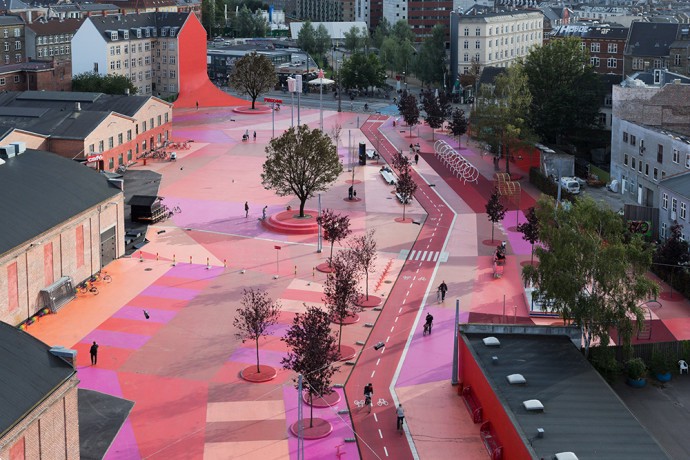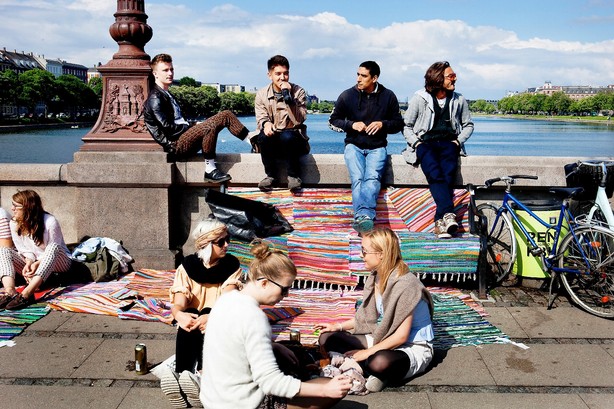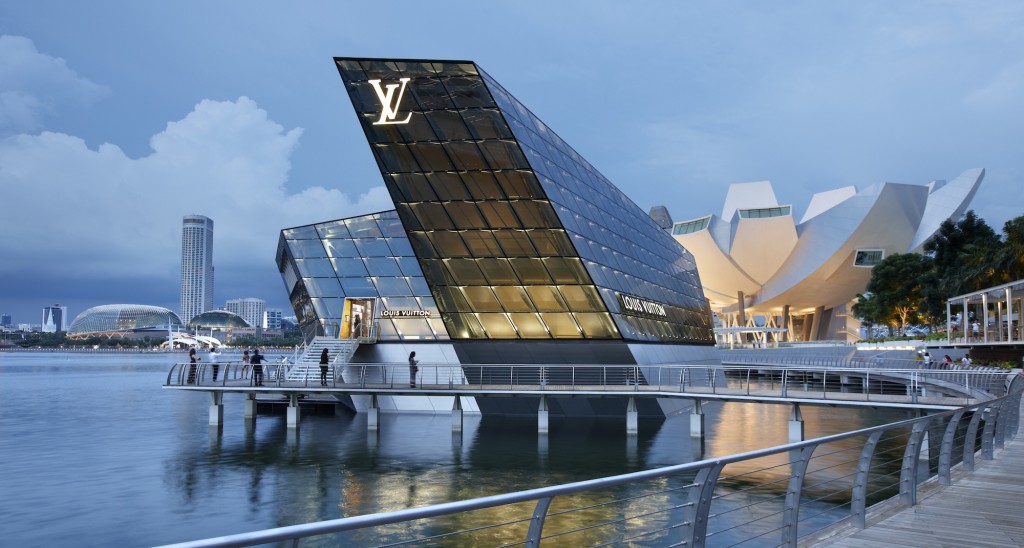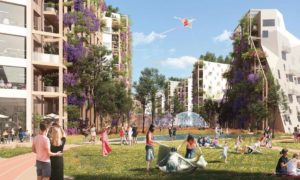(Editor’s note: This was originally posted on Medium and is reposted here with the permission of the author.)
By ELSA HO
When I was working in Singapore, I found myself and friends who also work there felt dissatisfied about the life more often than when we were in other places. We all have experience working in several countries, but only Singapore, this charming island on the surface, makes us feel gloomy for no reason.
My question was answered when I traveled from Singapore to Denmark, the happiest country in the world (although not everyone there agrees with this. Some told me they are only happy in the summer, some think if Denmark is the happiest place, then the world must be miserable).
The contrast between these two countries became the central research question throughout my stay in Denmark:
Why does Singapore, a developed country where anything you need is affordable and at your doorstep, make people depressed, while Denmark, with a high cost of living and brutal winters, make people relatively happy?
 There is actually nothing to complain about in Singapore. It is sunny throughout the year, has a well-developed public transportation system, is clean and safe, and offers 24-hour convenient stores are easily accessible. You can find affordable food and entertainment everywhere (for example, a meal at central business area takes around 3.5 USD; a movie ticket on weekday costs only 4.60 USD).
There is actually nothing to complain about in Singapore. It is sunny throughout the year, has a well-developed public transportation system, is clean and safe, and offers 24-hour convenient stores are easily accessible. You can find affordable food and entertainment everywhere (for example, a meal at central business area takes around 3.5 USD; a movie ticket on weekday costs only 4.60 USD).
Singapore’s government put a great effort into making the city green. There are fewer water and green areas than there are in Denmark, but not so few that its people complain. The income tax is especially low, taking only 2~3.5 percent for a typical white-collar worker. Expats like us live in luxurious condominiums, with huge swimming pool, gyms, Jacuzzis and BBQs. Nevertheless, all these didn’t stop us from feeling as though we are trapped in a beautiful concrete jungle.
In Denmark however, stores close at 5–6 pm, and an average coffee costs 4–5 USD. The income tax rate, ranging from 36 percent to 75 percent, speaks for itself. A Danish company owner told me that, for every 100 dollars he earns, only 25 goes in his pocket. As for the weather, nearly 10 months in a year are spent in cold winter without sunlight and vitamin D. A lot people live in old houses in Denmark, most of the time without even an elevator.
If convenience, low tax, sunny warm weather and fancy living spaces can’t guarantee happiness, what can?
The 2015 World Happiness Report used six indicators to measure a country’s happiness level. Besides high GDP per capita, healthy life expectancy and a lack of corruption, the indicators also included measures of social support, freedom to make life choices, and the generosity of the community.
Looking to the people of Denmark, reportedly the happiest on earth, happiness also comes from the fact that gender equality is prioritized, biking is the norm (so that people stay healthy), and they feel a sense of responsibility towards one another.
In addition, I think the way cities are formed also leads to the different experience between living in Denmark and in Singapore. Among the countless factors which form a city, I found that the presence of ample public spaces plays a surprisingly important role.
In Denmark, you can easily find parks, lakes, playgrounds, ground courts and open spaces. People always have a place to do all kinds of activities, and those places are usually well-maintained. (A friend from New York even told me that the worst public toilet he encountered in Denmark was still better than the one in his house.)
Coming from compact metropolises in Asia, I was impressed by how generously the Danish government provides open spaces:
Why does the government leave so many spaces for kids to play with their skateboard?
How do they resist the financial temptation of turning land into office buildings?
No one seemed to have the intention of building more apartments, even when the demand for housing is growing rapidly.
On the other hand, Singapore, as well as many other countries in Asia, plan and build the cities based on KPIs related to profit. It is easy to track the KPIs of office business and residential buildings. The taller and bigger they are, and the more spaces that can be rent out, the more profit in return.
When it comes to build public recreational areas, the KPIs become unclear. Should it be the usage rate and frequency? What does it mean if the frequency is high? People are more satisfied? So what? The priority of building public areas decreases under these kinds of ambiguous incentives. Obviously, the citizens still need places to unwind. So instead of parks, more movie theaters and shopping malls are built.
 The biggest difference between these two kinds of spaces are, public recreational areas are open anytime and everyone has equal access. In Denmark, when I saw kids climbing up and down in the equipment in the parks, people hanging out, drinking and chatting on the bridge, I thought of the uneventful weekends I had in Singapore.
The biggest difference between these two kinds of spaces are, public recreational areas are open anytime and everyone has equal access. In Denmark, when I saw kids climbing up and down in the equipment in the parks, people hanging out, drinking and chatting on the bridge, I thought of the uneventful weekends I had in Singapore.
I would sit beside the bay in the city center, staring at the Marina Bay Sand — the most spectacular hotel in Singapore — thinking about how those rich expats are having good times in the luxurious bars. Want to relax? Come with full pockets! As the sense of unfairness accumulated day by day, eventually it stops a lot of people from being happy. This even leads to the conflicting emotions local people have towards rich foreign expats.
Apart from not having enough open areas that welcome the public to sit, play around or relax, having warning and stop signs all over the country also affects the atmosphere in Singapore. There are all kinds of signs that stop people from doing things: you cannot buy alcohol after 10 pm, do not ride the bike here, do not bring durians to the train, do not littering … There was one time I saw twelve stop signs on my way from the basement to the ground floor on an escalator in the metro station.
The way a city feels and looks also has an imperceptible influence on what people value. From the overwhelming advertisements in almost every corner in Singapore, the luxurious hotels, the shopping centers … all create a desire to reach the upper class and encourage people toward consumerism.
On the contrary, Danish people are well-known for their low material desires. The low-key and modest cityscape might contribute to this. When writing about Copenhagen, magazine reporters like to mention the location of Louis Vuitton on the city’s main shopping street — this luxurious brand sits humbly in a corner, you might not even notice it when passing by (I couldn’t help but think of the ostentatious diamond-shaped LV building on the bay in Singapore.)

Admittedly, it might be easier to make people happier in Denmark. For people who live in a place so cold and overcast, there is probably nothing more luxurious than simply having a balcony at home where they can enjoy the sun in summer times. A lot of people there also told me that, since most of the earnings go toward tax, how much they earn becomes less important.
All those reasons that made Denmark a happier place to live are probably nothing new or surprising. We all know that money, status and lavish lives are not necessarily the keys to happiness. Nevertheless, these are still the things that people spend lifetimes pursuing, or use as criteria when making decisions. What exactly we are looking for in life is an everlasting question after our physiological needs are satisfied.
__________________________________________________
This is not an article about how Denmark is better than Singapore. Looking back, my life in Singapore was very safe, easy and comfortable. What inspired me and provoked me to write this piece is that I realized how the way a country or city is designed, how the public spaces are planned and used, really make a significant – but easily overlooked – difference to the experience.
About the author: Elsa Ho is a UX strategist and researcher who has worked in the U.S., Singapore, Tokyo, Shanghai, Taipei and Vancouver. She is passionate about disclosing the unsaid in different cultures.















